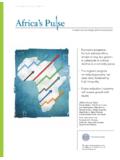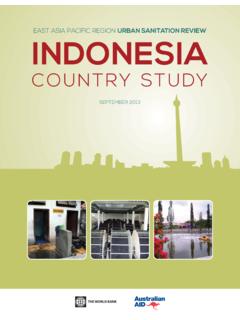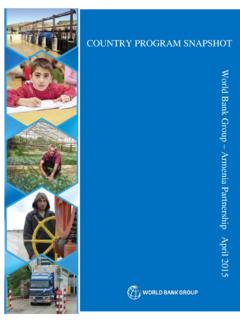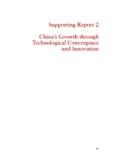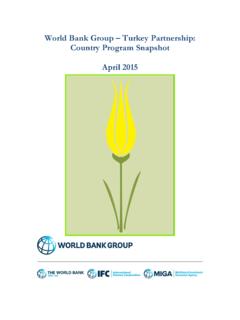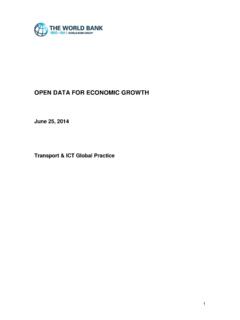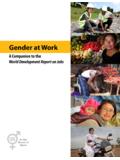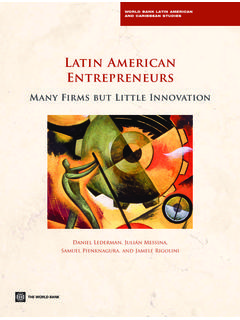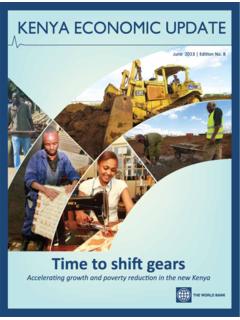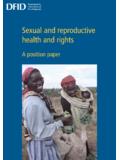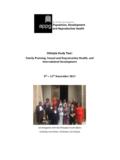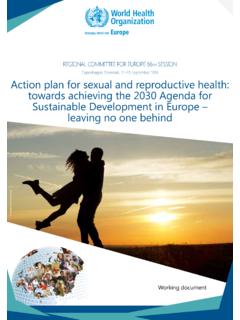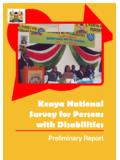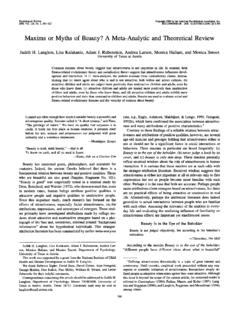Transcription of Business Plan for the GFF, final - World Bank Group
1 Business PLAN Global Financing Facility in Support of Every Woman Every Child May 2015 Business Plan for the Global Financing Facility in Support of Every Women Every Child Executive Summary .. i 1. Why: The Need and the Vision .. 1 A. Why a Global Financing Facility Is Needed .. 1 B. Vision of the Global Financing Facility .. 1 C. The Global Financing Facility and the GFF Trust Fund .. 3 2. What: Smart, Scaled, and Sustainable Financing for Results .. 4 A. Smart Financing .. 5 B. Scaled Financing .. 7 C. Sustainable Financing .. 8 D. Achieving and Measuring Results .. 10 3. How: Key Means to Deliver Results .. 11 A. Investment Cases for RMNCAH .. 12 B. Mobilization of Financing for Investment Cases.
2 15 i. Complementary Financing of the Investment Case .. 15 ii. Increased Government Investment in RMNCAH .. 16 iii. Leveraging additional financing for RMNCAH by linking grant funding to IDA and IBRD .. 18 iv. Innovative Engagement of Global and Local Private Sector Resources .. 19 C. Health Financing Strategies Focused on Sustainability .. 20 D. Investments in Global Public Goods that Support RMNCAH Results at the Country Level .. 21 4. Who: The Country Platform .. 22 A. Composition .. 22 B. Structure .. 23 C. Functions .. 24 5. The GFF Trust Fund .. 26 A. Eligibility and Resource Allocation .. 26 B. Roll- Out .. 27 C. Operational Approach .. 28 6. Governance.
3 29 7. Theory of Change, Risk Analysis, Results Framework, and Accountability .. 31 Annexes .. 33 List of acronyms CoIA Commission on Information and Accountability CRVS Civil registration and vital statistics EWEC Every Woman Every Child GDP Gross domestic product GFF Global Financing Facility HRITF Health Results Innovation Trust Fund IBRD International bank of Reconstruction and Development IDA International Development Association IFC International Finance Corporation IHP+ International Health Partnership+ MMR Maternal mortality ratio PHC Primary health care PMNCH Partnership for Maternal, Newborn and Child Health RMNCAH Reproductive, maternal, newborn, child, and adolescent health SDGs Sustainable Development Goals SRH Sexual and reproductive health UNDP United Nations Development Programme UNFPA United Nations Population Fund UNICEF United Nations Children s Fund USAID United States Agency for International Development WHO World Health Organization i Executive Summary The past two decades have seen unprecedented progress in improving the lives of women, adolescents, and children.
4 However, as the global community enters a post- 2015 World of Sustainable Development Goals (SDGs), a considerable part of the agenda with regard to reproductive, maternal, newborn child, and adolescent health (RMNCAH) remains unfinished. Far too many newborns, children, adolescents, and women still die from preventable conditions every year, and far too few have reliable access to quality health services. A large funding gap remains US$ billion in 2015 alone in high- burden, low- and lower- middle- income countries, equivalent to US$ per capita per year that can only be addressed by dramatic increases in financing from both domestic and international sources.
5 The Global Financing Facility in Support of Every Woman Every Child (GFF) was announced in September 2014 to respond to this challenge. The goal of the GFF is to accelerate efforts to end preventable maternal, newborn, child and adolescent deaths and improve the health and quality of life of women, adolescents and children, thereby preventing up to million maternal deaths, 101 million child deaths, and 21 million stillbirths in high- burden countries by 2030. The GFF aims to reduce inefficiency in health spending over time, ultimately resulting in a reduction of the incremental resource needs for RMNCAH of approximately 15% by 2030, which would lower the resources required by more than US$6 billion per year.
6 Additionally, the GFF aims to mobilize more than US$57 billion from 2015 to 2030 by crowding- in domestic resources, and by attracting new external support and improving coordination of existing assistance. The need for external support is frontloaded, with domestic resources progressively taking over for development assistance. Prompt initiation of GFF support creates more opportunities to plan for economic growth and capture its benefits in ways that shift countries onto trajectories toward sustainable financing, which would enable nearly 20 countries to graduate from receiving GFF funding by 2030 as their resource gaps close completely. The GFF acts as a pathfinder in a new era of financing for development by pioneering a model that shifts away from a focus solely on official development assistance to an approach that combines domestic financing, external support, and innovative sources for resource mobilization and delivery (including the private sector) in a synergistic way.
7 The GFF will serve as a major vehicle for financing the proposed SDG on healthy lives and will play a special role in scaling up financing to support the UN Secretary- General s renewed Global Strategy for Women s, Children s, and Adolescents Health . The GFF brings partners together to provide smart, scaled, and sustainable financing to achieve and measure RMNCAH results at country level: Smart financing ensures that evidence- based, high- impact interventions whether clinical and preventive interventions, health systems strengthening, or multisectoral interventions are prioritized and delivered in an efficient, results- focused manner; Scaled financing entails mobilizing the additional resources necessary to finance fully the RMNCAH agenda from domestic and international, and public and private sources.
8 Sustainable financing secures universal access to essential services for every mother and every child by capturing the benefits of economic growth and addressing the challenges of transitioning from low- to middle- income status. At the heart of the GFF approach is a rigorous focus on achieving and measuring results. The GFF provides results- focused financing while also supporting the systems needed to monitor progress and measure results, particularly civil registration and vital statistics (CRVS). ii The GFF operates as a facility that maximizes the comparative advantages of a broad set of partners. They are engaged at country level through a country platform that, under the leadership of national governments, builds on existing structures while embodying two key principles: inclusiveness and transparency.
9 The partners use a number of approaches and mechanisms: Investment Cases for RMNCAH; Mobilization of financing for Investment Cases: o Complementary financing of the Investment Case; o Increased government investment in RMNCAH; o Leveraging additional financing for RMNCAH by linking grant funding to financing from the International Development Association (IDA) and the International bank of Reconstruction and Development (IBRD); o Innovative engagement of global and local private sector resources; Health financing strategies focused on sustainability; Investments in global public goods that support RMNCAH results at the country level. Across all of these, the GFF has a particular focus on issues ( , family planning, nutrition, CRVS) and target populations ( , adolescents) that have historically been under- funded.
10 Equity, gender, and rights underpin and are mainstreamed throughout the GFF s work. Equity analysis ensures that disadvantaged and vulnerable populations are identified and prioritized. To complement the work of the broader facility, a multi- donor trust fund the GFF Trust Fund has been established at the World bank . The GFF Trust Fund builds on the experience and management capacity of the Health Results Innovation Trust Fund (HRITF) in providing results- focused financing to support countries to achieve RMNCAH results. It leverages additional financing for RMNCAH by linking grant funding to IDA or IBRD financing. The trust fund mobilizes the expertise of the entire World bank Group , including the International Finance Corporation (IFC), the World bank Group s private sector arm.

